Japan Travel: Odaiba

photo credits: gotokyo.org
Odaiba, l’isola artificiale dello shopping e del divertimento
La prima volta che vidi Odaiba fu grazie alla serie animata di Natsuko Takahashi, “Tokyo Magnitude 8.0“ (東京マグニチュード). Nell’anime i protagonisti si recano ad una mostra di robot proprio sull’isola, splendidamente dettagliata nella sua riproduzione. In quel momento mi venne l’idea di inserire nella nostra programmazione un articolo riguardante questo luogo così tecnologico e colorato!
Odaiba (お台場) nacque sotto lo shogunato Tokugawa sul finire del periodo Edo sotto forma di 6 piccole isole fortificate artificiali. Lo scopo di queste isole era quello di proteggere e contrastare i possibili attacchi a Tokyo dalle navi della flotta del Commodore Perry.
Più di 100 anni dopo, nei primi anni ‘80 le piccole isole sono state unite attraverso un’opera di riempimento per sviluppare un enorme quartiere residenziale e finanziario.
Il progetto subì un forte rallentamento a causa dello scoppio della “bubble economy” nel 1991, abbandonando Odaiba quasi completamente.
Fu solo nella seconda metà degli anni ’90 che la grande isola artificiale unificata divenne una delle più famose attrazioni turistiche di Tokyo, popolandosi di hotel, centri commerciali, ristoranti, negozi e la linea ferroviaria rialzata Yurikamome.
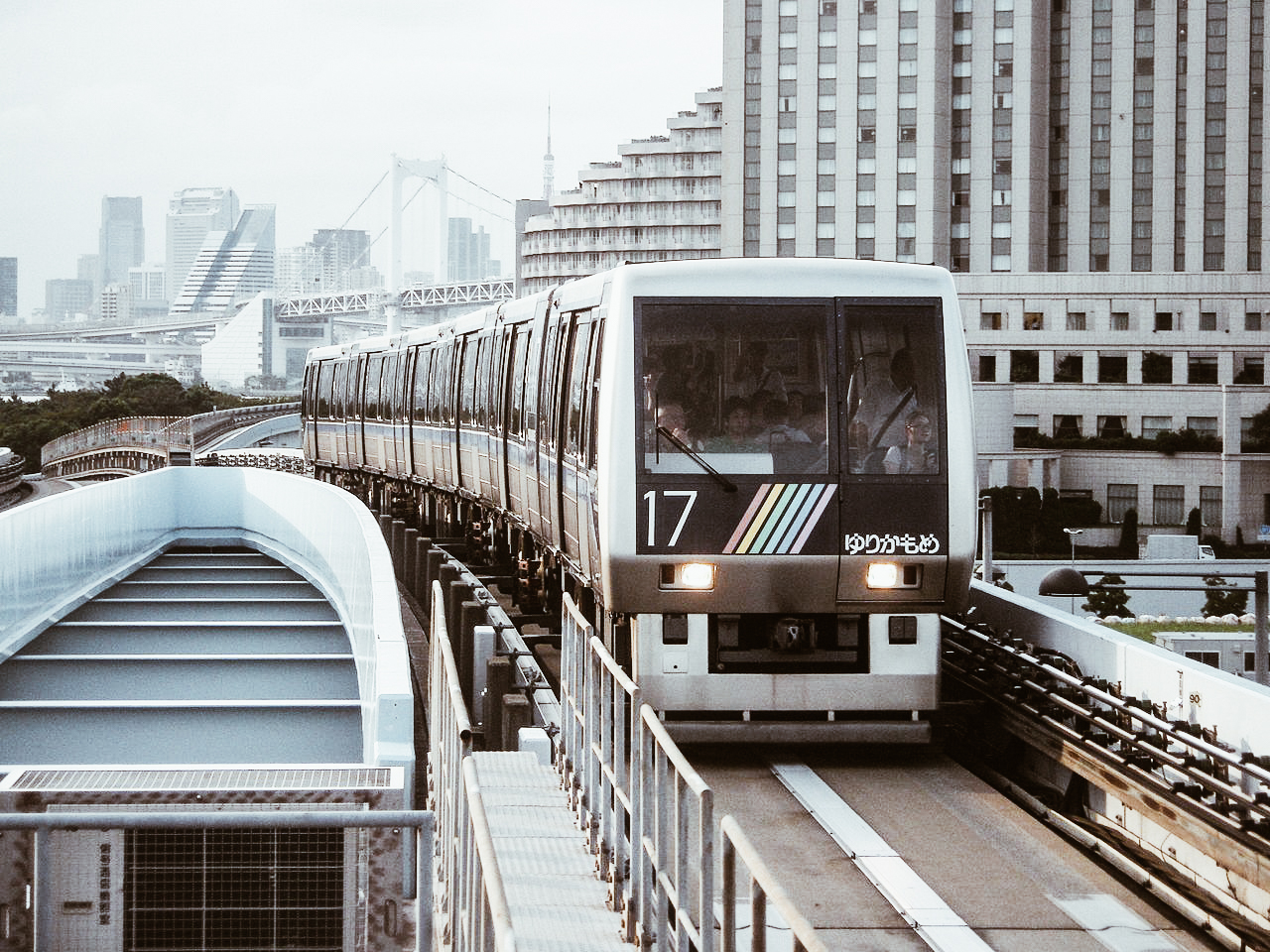
photo credits: wikipedia.org
Due facce della stessa isola: Odaiba Ovest, Odaiba Est
Odaiba Ovest è la sede di grandi parchi e centri commerciali.
Tra i più scenografici troviamo l’Odaiba Seaside Park che si estende sulla costa nord e una replica della Statua della Libertà sorge proprio sulla sua spiaggia. Qui ha sede il primo dei più grandi centri commerciali dell’isola. Si tratta del Decks Tokyo Beach al cui interno è possibile visitare il museo delle cere di Madame Tussaud’s. Il secondo centro commerciale è Acqua City con i suoi due piani dedicati alla ristorazione, negozi vari, un cinema multisala, una cappella per matrimoni e il Sony Explora Science Technology Museum: un museo della scienza che esplora “luce”, “suono” ed “intrattenimento”.
(Per tutte le informazioni sul museo, potete visitare il sito ufficiale, in inglese: https://www.sonyexplorascience.jp/english/)

photo credits: anaintercontinental-tokyo.jp
Non molto lontano da Acqua City sorge il Fuji TV Building, uno degli edifici più bizzarri del Giappone. Dallo stile ultra-futuristico. Questa costruzione di 25 piani è stata progettata dall’architetto Kenzo Tange e completata nel 1997. Sede centrale della Fuji Television Network, a renderlo particolarmente attraente è la sfera d’argento in titanio che lo sovrasta. Trentadue metri di diametro, all’interno di questo elemento c’è una piattaforma di osservazione aperta al pubblico che offre una vista completa di Tokyo e del Monte Fuji.

photo credits: gaijinpot.com
Più a sud sorge il Diver City Tokyo Plaza, il terzo centro commerciale di Odaiba progettato per essere lo “spazio teatrale della città”. E’ una destinazione quasi obbligatoria per i visitatori stranieri di Tokyo perchè offre una vasta selezione di souvenir a tema giapponese in molti dei suoi negozi e altrettanti ristoranti giapponesi autentici.
Se pensate che i centri commerciali siano abbastanza, vi state sbagliando. E’ con Palette Town che Odaiba vince: molto più che una semplice aggregazione di negozi, è una vera e propria mini città. La sua torreggiante ruota panoramica, conosciuta come Daikanransha (大観覧車) può essere vista in tutta l’isola grazie ai suoi 115m di altezza come segno incontrastato di divertimento e allegria. Palette Town offre numerose attrazioni il cui fulcro è Venus Fort, il regno dello shopping. Venus Fort è stato aperto nel 1999 ed è stato progettato per assumere le fattezze dell’Europa del 17° secolo, completo di un cielo artificiale dipinto sul tetto che segue l’alternarsi del giorno e della notte come se ci si trovasse realmente all’aria aperta.
Appena sotto Venus Fort si trova il Sun Walk, che offre una collezione di negozi per gli amanti degli animali domestici. Qui non solo è possibile ristorarsi al Dog Cafe, ma persino noleggiare un cane per un’ora per portarlo a fare una passeggiata. Palette Town include anche la vetrina tecnologica di Toyota Mega Web, il divertente salotto per il tempo libero e uno dei più conosciuti luoghi di intrattenimento per eventi live: lo Zepp Tokyo (ゼップ東京).
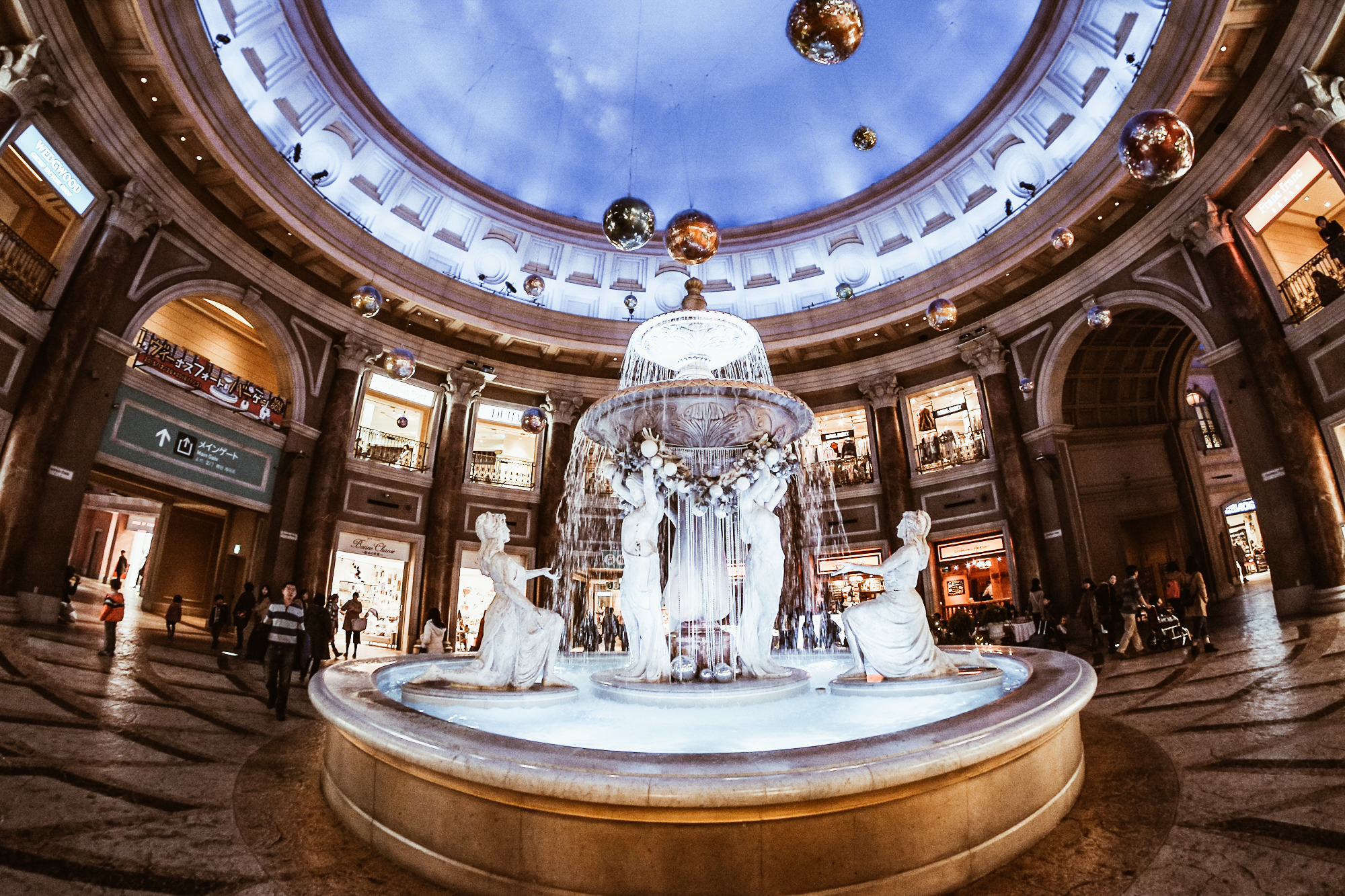
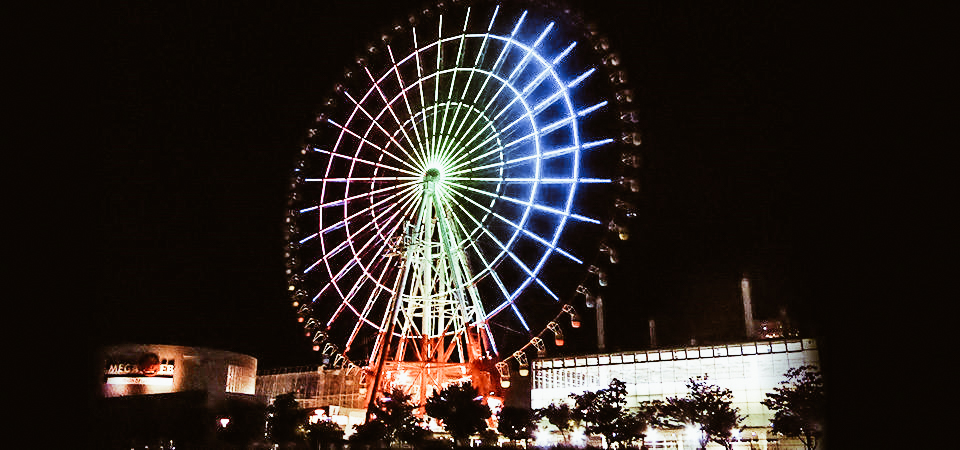
photo credits: scottshaw.org, shutoko.jp
Odaiba Est è interamente dedicata alle mostre e allo sport.
Sicuramente di rilevante importanza è il Tokyo Big Sight (Tokyo International Exhibition Center), una delle principali arene e centri congressi della nazione. E’ qui infatti dove saranno ospitati gli eventi di scherma, lotta e taekwondo durante Olimpiadi di Tokyo del 2020. Aperto nel 1996, il Tokyo International Exhibition Center si fa notare grazie alla sua iconica Conference Tower formata da quattro piramidi invertite. L’intero complesso Tokyo Big Sight possiede numerosi ristoranti, caffetterie, un negozio di generi alimentari e un angolo vendite dedicato ai goods di Big Sight.

photo credits: mystays.com
Accanto sorge il Panasonic Center, uno showroom per i nuovi prodotti e le nuove tecnologie Panasonic. Al primo piano si trova l’Atrium Exhibition dove avvengono le sponsorizzazioni di eventi in tutto il mondo e tutte le campagne pubblicitarie del colosso dell’elettronica. Sempre sullo stesso piano c’è il Wonder Life-Box dove sono presentate ai visitatori le nuove tecnologie del futuro e gli ultimi prodotti dell’azienda. Il secondo piano ospita RiSuPia, un museo interattivo incentrato sulla matematica nascosta nella natura e nella scienza. Estremamente amato è il Nintendo Game Front dove sono presenti tutti gli ultimi giochi di Nintendo con la possibilità di provarli! Qui si trova anche il Cafe E-Feel per una pausa golosa grazie alla sua vasta gamma di caffè, dolci e pasti leggeri.
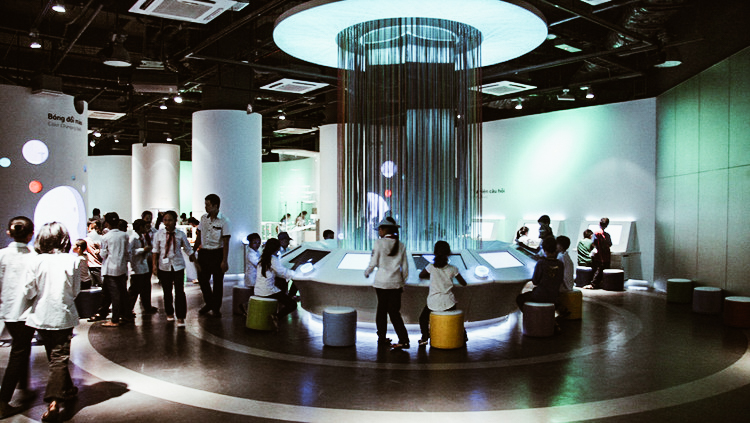
photo credits: expology.com
In questa parte del quartiere è situato anche il Tennis–no–Mori Park, un enorme centro dedicato al gioco del tennis con 48 campi. Presente anche l’Ariake Coliseum stadium, un’arena sportiva al coperto nell’Ariake Tennis Forest Park che può contenere fino a 10.000 persone.

photo credits: tokyo20ty20ty.com
Raggiungere Odaiba
Raggiungere Odaiba da Tokyo è semplice! Si può optare per la barca grazie al Tokyo Water Bus o la Tokyo Cruise. In alternativa si può prendere un taxi oppure basta salire sul treno Yurikamome, la TWR Rinkai Line oppure le Japan Railways. Tuttavia, se amate camminare, allora non pensateci due volte: il Rainbow Bridge fa per voi! Un lungo ponte di 800 metri che però non è percorribile nelle ore notturne e in caso di maltempo o di eventi festivi.
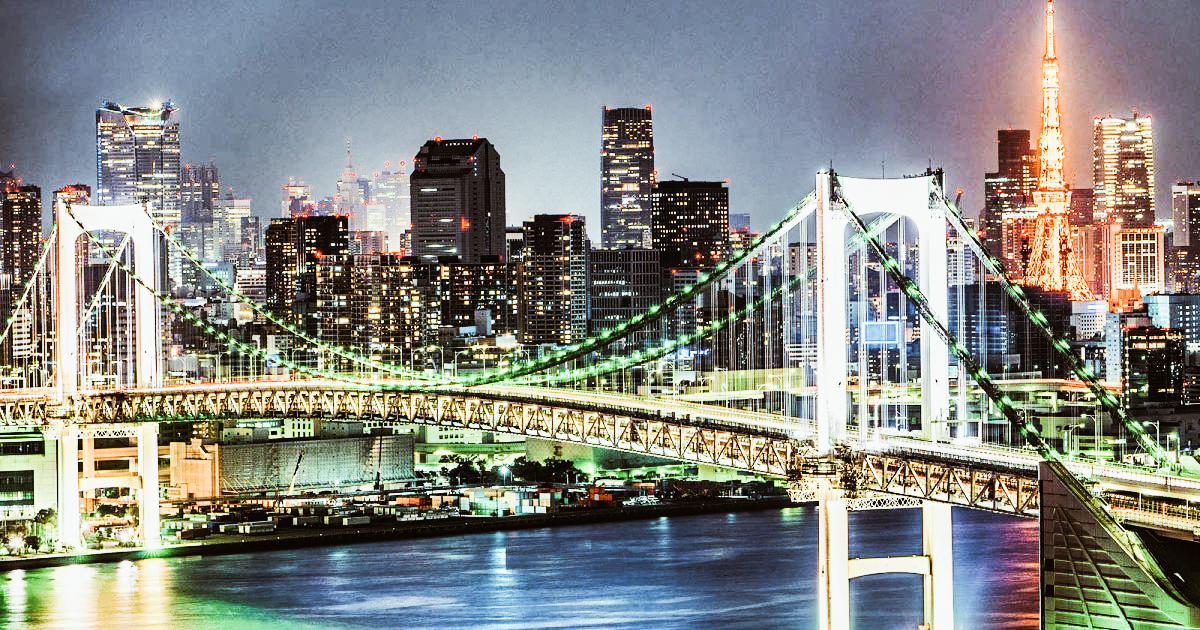
photo credits: mywowo.net
Pensate che possa essere sufficiente per visitare Odaiba? Gli input sono davvero molti. Come tutto il Giappone, ogni angolo assume un fascino enorme che aumenta di volta in volta scoprendo i dettagli complessi che lo hanno realizzato.
Condividi:
- Fai clic per condividere su Facebook (Si apre in una nuova finestra)
- Fai clic qui per condividere su Twitter (Si apre in una nuova finestra)
- Fai clic qui per condividere su Tumblr (Si apre in una nuova finestra)
- Fai clic qui per condividere su Pinterest (Si apre in una nuova finestra)
- Fai clic per condividere su Telegram (Si apre in una nuova finestra)
- Fai clic per condividere su WhatsApp (Si apre in una nuova finestra)
- Fai clic qui per condividere su Reddit (Si apre in una nuova finestra)
- Fai clic qui per stampare (Si apre in una nuova finestra)






